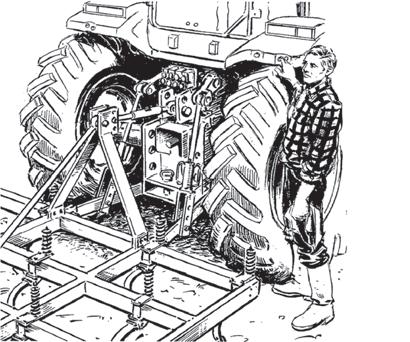
2 minute read
9 LOWERING SPEED ............................................................................................................. G
- Unstable river banks. - Steep slopes. This list is not comprehensive. Evaluate permanently the risks taken in the work space. Check nobody is standing in the risk zone between the tractor and tool. Check nobody is standing next to the lifting zone. Check nobody is present on the level of the wheels before using the tractor. Before leaving the tractor, lower the front and rear tools to the ground. As a general rule, always use equipment in good condition, suitable for the size of the tractor and the type of work. The loads on the front and rear axle must not exceed the maximum acceptable loads specified in this user manual. Extended exposure to a high noise level may cause hearing conditions, even deafness. To protect against noise, wear hearing protections, such as ear plugs. Keep sufficient distance between high voltage power lines and the tractor. Always check that nobody is inside the tool deployment zone. Before using external controls, ensure nobody is present in the tool deployment zone, and that the engine is running at minimum speed.
6.1.7.2 Wheel track
To limit the risk of tipping over, always use the maximum track width possible for the work to perform.
6.1.7.3 Hitching tools
Carefully follow the instructions in the operator's manual for the machine mounted on the tractor, the towed machine or trailer, and do not use the tractor/machine assembly if the instructions have not been followed in full. If the tool is jammed or fails, apply the operating mode described in the tool's user manual to allow safe releasing. To hitch or unhitch a tool, set the gear lever to neutral and apply the handbrake. Use a low gear for all tractor manoeuvres. Sufficient front-end ballast must be used if the implement is heavy, to prevent the tractor rearing-up. Towing bar: This is not intended as a trailer towing hitch and is not designed to carry vertical loads. Use the safety equipment provided to hitch implements (towing jaw, towing stub, retaining pins, etc.). When coupling or uncoupling tools, check that nobody is located between the tractor and the tool. The front towing clevis must be used only to tow the tractor using a towing bar on solid ground. In no event should it be used to pull a swamped tool or tractor.
001hsn36
6.1.7.4 Driving
Do not enter or leave the tractor when it is in motion. Adapt speed to the conditions offered by the environment the tractor is used in. On downhill routes, use the motor brake and maintain appropriate speed. Consider the wheelbase and the inertia mass coupled tools. Avoid risk of overturning. Do not turn sharply when working on slopes. Maximum slope allowed while working: See chapter K. During a break in work, even if only brief, stop the engine and apply the handbrake. Before leaving the tractor, lower the front and rear tools to the ground.








